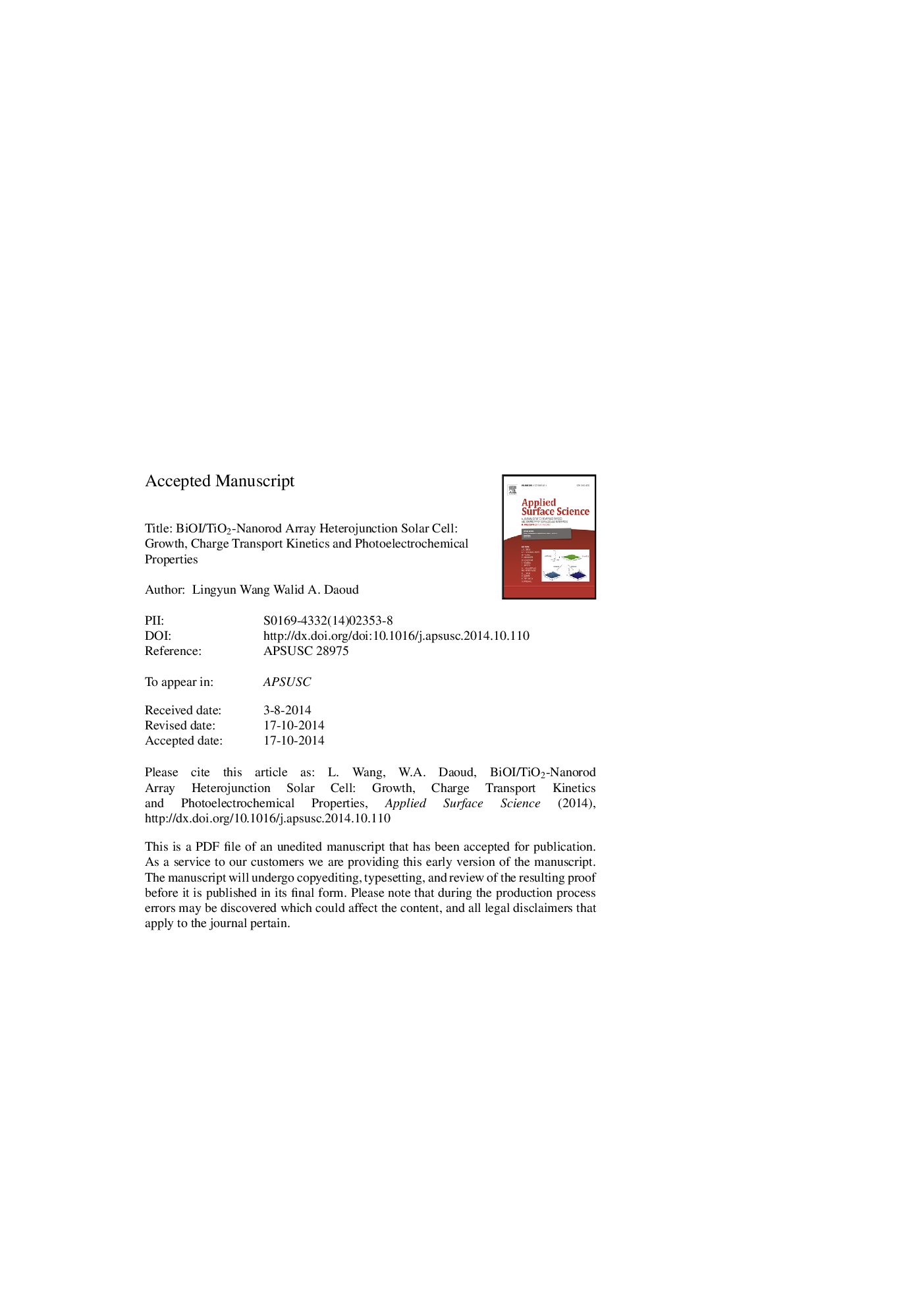| Article ID | Journal | Published Year | Pages | File Type |
|---|---|---|---|---|
| 5349061 | Applied Surface Science | 2015 | 20 Pages |
Abstract
A series of BiOI/TiO2-nanorod array photoanodes were grown on fluorine-doped tin oxide (FTO) glass using a simple two-step solvothermal/hydrothermal method. The effects of the hydrothermal process, such as TiO2 nanorod growth time, BiOI concentration and the role of surfactant, polyvinylpyrrolidone (PVP), on the growth of BiOI, were investigated. The heterojunctions were characterized by X-ray diffraction, UV-vis absorbance spectroscopy and scanning electron microscopy. The photoelectrochemical properties of the as-grown junctions, such as linear sweep voltammetry (LSV) behavior, photocurrent response and incident photon-to-electron conversion efficiency (IPCE) under Xenon lamp illumination, are presented. The cell with BiOI/TiO2 (PVP) as photoanode can reach a short current density (Jsc) of 0.13Â mA/cm2 and open circuit voltage (Voc) of 0.46Â V vs. Ag/AgCl under the irradiation of a 300Â W Xenon lamp. Compared to bare TiO2, the IPCE of BiOI/TiO2 (PVP) increased 4-5 times at 380Â nm. Furthermore, the charge transport kinetics within the heterojunction is also discussed.
Related Topics
Physical Sciences and Engineering
Chemistry
Physical and Theoretical Chemistry
Authors
Lingyun Wang, Walid A. Daoud,
